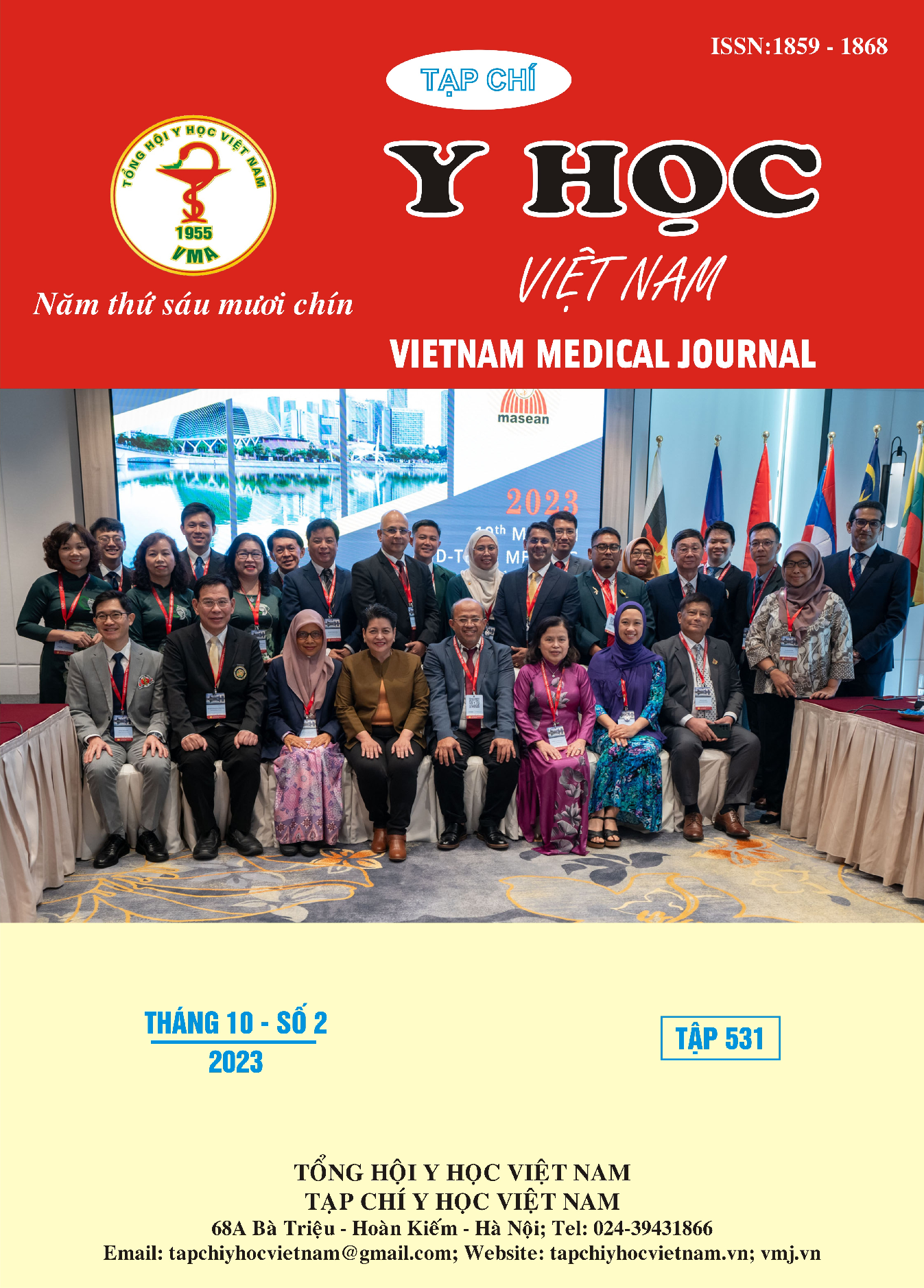DISTRIBUTION AND ANTIBIOTIC RESISTANCE CHARACTERISTICS OF STENOTROPHONAS MALTOPHILIA ISOLATED FROM MILITARY HOSPITAL 103
Main Article Content
Abstract
Objective: Study distribution and antibiotic resistance characteristics of Stenotrophonas maltophilia isolated from Military Hospital 103 in the period from 2014 to 2021. Subject and methods: This was a cross-sectional study. The subject of the study was S. maltophilia strains isolated from Military Hospital 103 in the period from 2014 to 2021. Results: The total number of S. maltophilia strains isolated in the period of study was 91. Of which, the percentage of S. maltophilia isolated from patients in the age group of ≥60 years was the highest among other age groups, at 51.6%. The rate of S. maltophilia causing disease in male (74.7%) was approximately three time higher than that in female (25.3%). The proprotion of S. maltophilia isolated from blood and specimen from respiratory tract was the highest among specimens, at 62.6% and 25.3%, respectively. The percentage of S. maltophilia isolated from the intensive care unit was the highest among hospital wards, at 20.9%. S. maltophilia was the most resistant to ceftazidime (70,4%), chloramphenicol (40,0%) and least resistant to levofloxacin (7,8%). Conclusion: The present study indicated that S. maltophilia was relatively high resistant to ceftazidime and chloramphenicol, which are 2 out of 5 tested antibiotics that can use to treat S. maltophilia infection. Our study suggests the necessity of new antibiotics development for treatment S. maltophilia infection and the performance of infection control measures to prevent the antibiotic resistance of S. maltophilia.
Article Details
Keywords
Stenotrophonas maltophilia, antibiotic resistance, bacteria
References
2. M. Dadashi, et al., Global prevalence and distribution of antibiotic resistance among clinical isolates of Stenotrophomonas maltophilia: a systematic review and meta-analysis. J Glob Antimicrob Resist,(2023).
3. Amy L. Leber, Clinical Microbiology Procedures Handbook, ASM Press, 2016. p. 2.1.1-2.1.30.
4. Amy L. Leber, Clinical Microbiology Procedures Handbook, ASM Press, 2016. p. 3.3.1.1-3.3.2.15.
5. Clinical Lab Standards Institute, Performance Standards for Antimicrobial Susceptibility Testing (M100). 33 ed. 2023: Clinical Lab Standards Institute.
6. M. F. Mojica, et al., Clinical challenges treating Stenotrophomonas maltophilia infections: an update. JAC Antimicrob Resist,(2022). 4(3), dlac040.
7. Z. Duan, et al., Molecular epidemiology and risk factors of Stenotrophomonas maltophilia infections in a Chinese teaching hospital. BMC Microbiol,(2020). 20(1), 294.
8. N. Bostanghadiri, et al., Characterization of Phenotypic and Genotypic Diversity of Stenotrophomonas maltophilia Strains Isolated From Selected Hospitals in Iran. Front Microbiol,(2019). 10, 1191.


